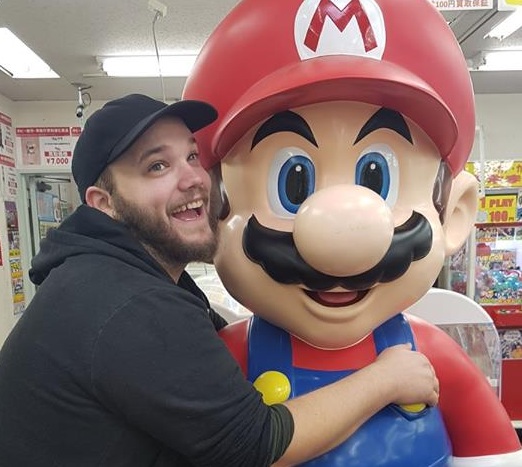
Before this interview, I’d seen Aura of Worlds around for quite awhile, and I’ve watched it change a lot in that time. A rogue-lite platformer with an immediately old-school appearance, with some excellent detail below the surface level, it’s a game that tugs on many nostalgic heartstrings. At this year’s PAX Aus, I spoke with pixel artist Jessica Turner and the game’s main developer Anthony Liew to learn more about the game and their experiences as indie devs.
How would you describe Aura of Worlds?
Jessica: Aura of Worlds is a procedurally generated, rogue-lite platformer. So, basically, you’re just trying to get from point A to point B without dying, because literally everything is out to kill you.
GC: Even the walls themselves?
Jessica: Even the walls themselves. There are little hazards that are specific to certain areas, and you have to try and outrun them or navigate through dark areas. I’m one of the artists (we have two artists), and I mostly do the monster designs, bosses, the UI, some of the scenery, but most of the scenery is done by our other artist.
What has been the biggest challenge during development of the game?
Anthony: The greatest challenge in games development for us has been marketing. This is largely because I and most of the regular contributors of the team are quite introverted. Discoverability is also a huge problem in the industry right now. With so many games being released each year and the barrier to entry getting ever lower, it’s getting more and more challenging to stand out amongst the flood.
What inspired the game to begin with?
Anthony: Well, we like games that focus on emergent where simple systems react to create complex outcomes. Games that encourage players to explore and experiment to find solutions. As a result, Terraria, Dishonored and Spelunky all played no small part in inspiring the design.

Were there any other influences that changed development as it progressed?
Anthony: Yep! We’ve played way too many rogue-lites, such as 20xx, Dead Cell, TowerClimb, Rogue Legacy, Risk Of Rain, amongst many others.
There are a lot of social issues surrounding the game industry at the moment, and the indie community has been very supportive of many people dealing with these issues. Do you think indie developers have a responsibility to address these issues with their games?
Jessica: Well, I think everybody has a responsibility to push for inclusiveness for everyone. Games are for everyone, not a specific demographic, you should be doing your best to welcome everybody – all ages, all genders, just everyone.
How long do you think it will be before development is complete, and what else needs to go into the game before you reach that point?
Anthony: The game is currently around 95% system complete. We are looking to implement permanent progression in the form of world shortcuts, starting equipment options, and cosmetics. Nothing that takes away the challenge of the game, but rather giving the player more options in how they play. The rest of what needs to be implemented is content.
Currently, we have 3 main worlds, each with their own unique generation patterns, traps, enemies, and environmental objects. We intend to have three more on full release. We’re also dividing our release into phases in order to build relationships with players and press. The game is currently on sale on Itch.IO and will be released in Steam Early Access around March 2018. Full release will likely be around 2019.

Jessica, how did you get your start in video game art?
Jessica: I did a game design degree at RMIT and that first got me into doing pixel art. Then I met Anthony at a meet up before a game jam, I think the international game jam, and people wore a coloured thing that represented what they did. He saw my pixel art and then over time I got into working on the project, but I’d been in games development before that making games in Unity.
What has your experience as an indie developer been like without the support of a publisher or third party?
Anthony: A bit hectic! It means the game is currently being funded by savings. I’m fortunate to have a day job at Interactive Australia that funds development. We have also been fortunate to have help from Creative Victoria this year which offered a grant to offset part of the cost of the booth.
What are the most significant lessons learned from developing this game?
Anthony: Relationships are critical. Whether it be with fellow developers, players, or games media. Help and take interest in the work of others and most will reciprocate in the long term. And don’t over-scope – the scope of this project has gradually grown since the project started in 2013 with each version.
What advice would you offer to anyone trying to develop their own title?
Anthony: Keep up the hard work, but know that raising awareness of your hard work is crucial. All too often we’ve seen very talented colleagues have months or years not get anywhere near the recognition they deserve (such as Adorkable Games and RedPoint Games). Also, get other people to thoroughly test your game to gain different perspectives, highlight areas for improvement, and, in the long term, stay sane from reassurance.

Here are some other places where you can show your support for Aura of Worlds:
Twitter: https://twitter.com/cognitiveforge
Steam: https://steamcommunity.com/
Itch.io: https://cognitiveforge.itch.io/auraofworlds
Website: https://www.auraofworldsgame.com/











